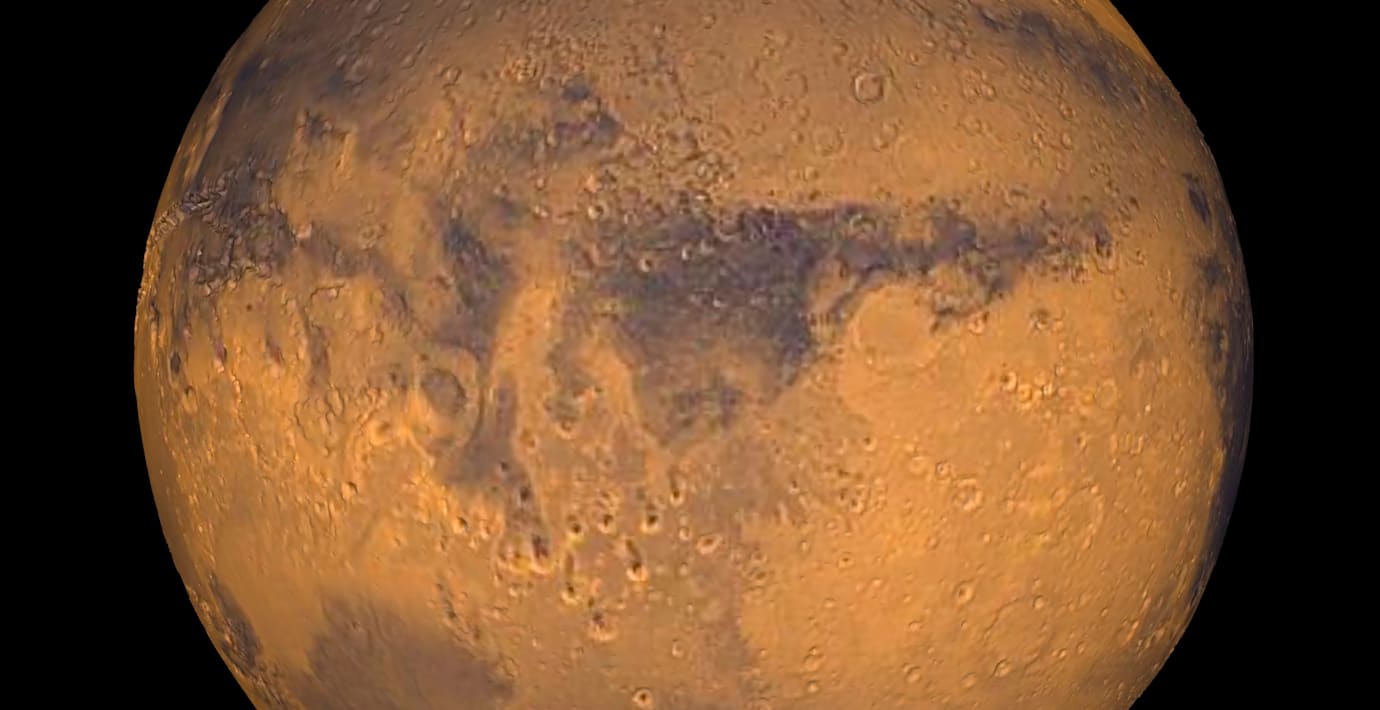
Nya uppgifter att vänta om atmosfären på Mars
I morgon, torsdag, ska Nasa delge världen nya uppgifter om Mars – och det ska handla om planetens atmosfär.
Enligt ett pressmeddelande ska nya uppgifter om ”atmosfärens öde” avslöjas. Tidigare i år kunde Nasa-studier stärka teorin att Mars tidigt i historien hade en helt annan atmosfär, som hastigt gick förlorad.
Att atmosfären innehåller en viss mängd metan, vilket upptäcktes 2003, ses av vissa som ett tecken på antingen liv eller vulkanisk aktivitet.
bakgrund
Mars atmosfär består till 96 procent av koldioxid
Wikipedia (en)
The atmosphere of Mars is the layer of gases surrounding Mars. Like that of Venus, it is composed mostly of carbon dioxide, but is far thinner. The atmospheric pressure on the Martian surface averages 600 pascals (0.087 psi), about 0.6% of Earth's mean sea level pressure of 101.3 kilopascals (14.69 psi) and only 0.0065% of Venus's 9.2 megapascals (1,330 psi). It ranges from a low of 30 pascals (0.0044 psi) on Olympus Mons's peak to over 1,155 pascals (0.1675 psi) in the depths of Hellas Planitia. This pressure is well below the Armstrong limit for the unprotected human body. Mars's atmospheric mass of 25 teratonnes compares to Earth's 5148 teratonnes with a scale height of about 11 kilometres (6.8 mi) versus Earth's 7 kilometres (4.3 mi).
The Martian atmosphere consists of approximately 96% carbon dioxide, 1.9% argon, 1.9% nitrogen, and traces of free oxygen, carbon monoxide, water and methane, among other gases, for a mean molar mass of 43.34 g/mol. There has been renewed interest in its composition since the detection of traces of methane in 2003 that may indicate life but may also be produced by a geochemical process, volcanic or hydrothermal activity.
The atmosphere is quite dusty, giving the Martian sky a light brown or orange-red color when seen from the surface; data from the Mars Exploration Rovers indicate that suspended dust particles of roughly 1.5 micrometres diameter.
On 16 December 2014, NASA reported detecting an unusual increase, then decrease, in the amounts of methane in the atmosphere of the planet Mars. Organic chemicals have been detected in powder drilled from a rock by the Curiosity rover. Based on deuterium to hydrogen ratio studies, much of the water at Gale Crater on Mars was found to have been lost during ancient times, before the lakebed in the crater was formed; afterwards, large amounts of water continued to be lost.
On 18 March 2015, NASA reported the detection of an aurora that is not fully understood and an unexplained dust cloud in the atmosphere of Mars.
On 4 April 2015, NASA reported studies, based on measurements by the Sample Analysis at Mars (SAM) instrument on the Curiosity rover, of the Martian atmosphere using xenon and argon isotopes. Results provided support for a "vigorous" loss of atmosphere early in the history of Mars and were consistent with an atmospheric signature found in bits of atmosphere captured in some Martian meteorites found on Earth.
Omni är politiskt obundna och oberoende. Vi strävar efter att ge fler perspektiv på nyheterna. Har du frågor eller synpunkter kring vår rapportering? Kontakta redaktionen